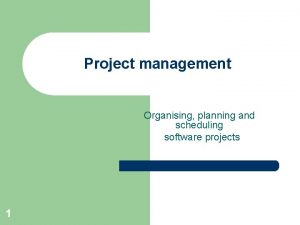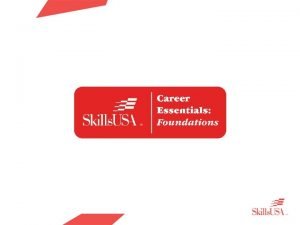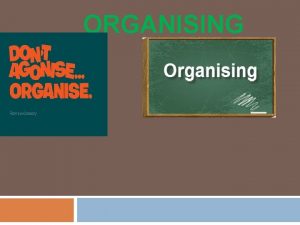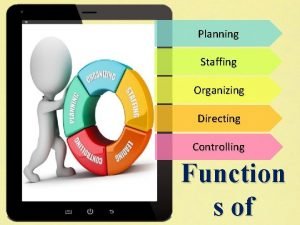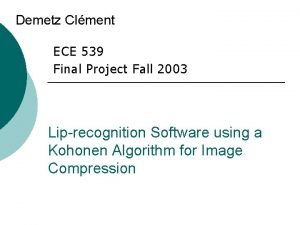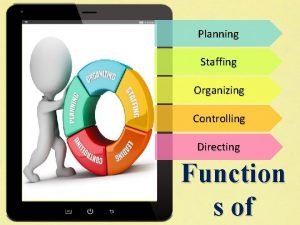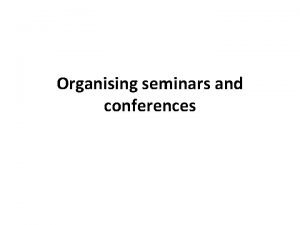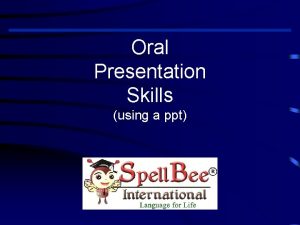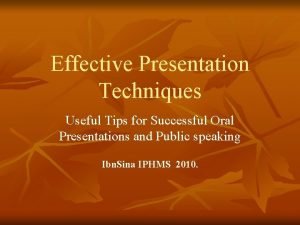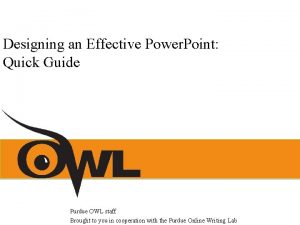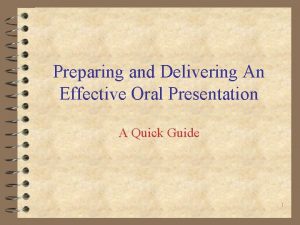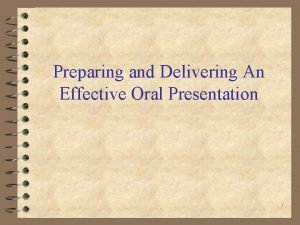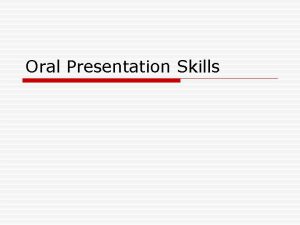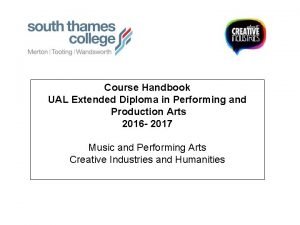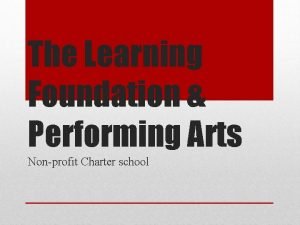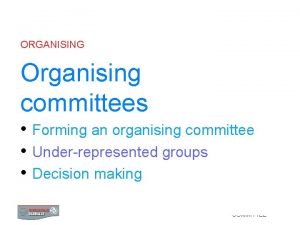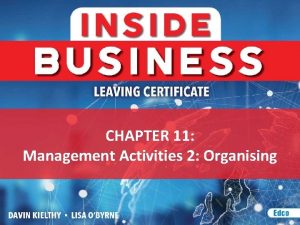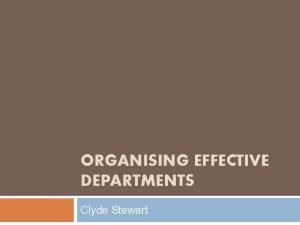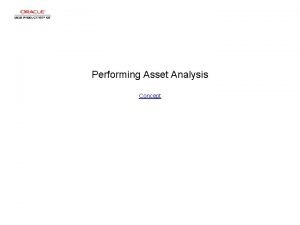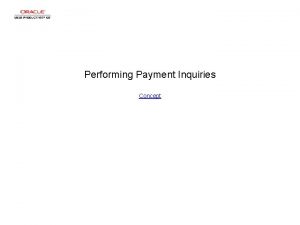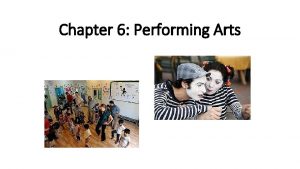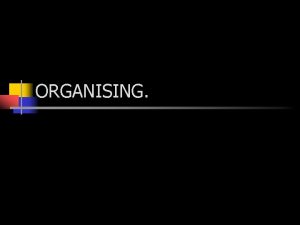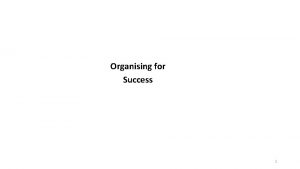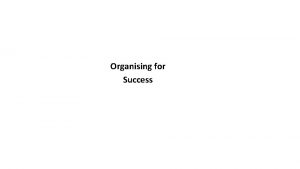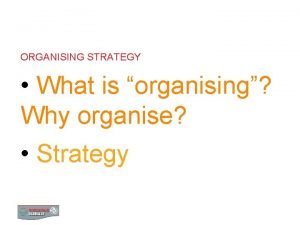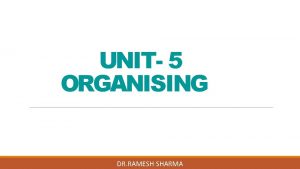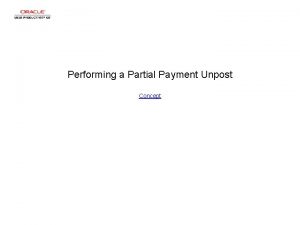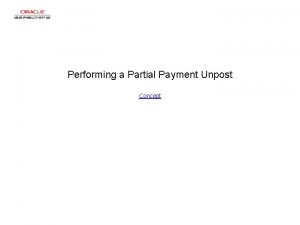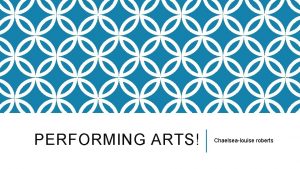Lecture 10 Organising and Performing An Effective Presentation
























- Slides: 24

Lecture 10 Organising and Performing An Effective Presentation ECON 105 Research Methods and Project Design

Presentations Tips to be Covered l l l Outline Slide Structure Fonts Colour Background Graphs Spelling and Grammar Presenter’s Do’s & Do Nots Special Points for this COURSE Conclusions Questions

Outline l Make your 1 st or 2 nd slide an outline of your presentation – l l Ex: previous slide Follow the order of your outline for the rest of the presentation Only place main points on the outline slide – Ex: Use the titles of each slide as main points

Slide Structure – Good l Use 1 -2 slides per minute of your presentation (for arround 10 -15 minutes do not exceed 20 slides) l l l Write in point form (bullets), not complete sentences Include 4 -5 points per slide Avoid wordiness: use key words and phrases only

Slide Structure - Bad l This page contains too many words for a presentation slide. It is not written in point form, making it difficult both for your audience to read and for you to present each point. Although there are exactly the same number of points on this slide as the previous slide, it looks much more complicated. In short, your audience will spend too much time trying to read this paragraph instead of listening to you.

Slide Structure – Good l Show one point at a time: – – – Will help audience concentrate on what you are saying Will prevent audience from reading ahead Will help you keep your presentation focused

Slide Structure - Bad l Do not use distracting animation l Do not go overboard with the animation l Be consistent with the animation that you use

Fonts - Good l l Use at least an 18 -point font Use different size fonts for main points and secondary points – l this font is 24 -point, the main point font is 28 -point, and the title font is 36 -point Use a standard font like Times New Roman or Arial

Fonts - Bad l If you use a small font, your audience won’t be able to read what you have written l CAPITALIZE ONLY WHEN NECESSARY. IT IS DIFFICULT TO READ l Don’t use a complicated font

Colour - Good l Use a colour of font that contrasts sharply with the background – l Use colour to reinforce the logic of your structure – l Ex: blue font on white background Ex: light blue title and dark blue text Use colour to emphasize a point – But only use this occasionally

Colour - Bad l l l Using a font colour that does not contrast with the background colour is hard to read Using colour for decoration is distracting and annoying. Using a different colour for each point is unnecessary – l Using a different colour for secondary points is also unnecessary Trying to be creative can also be bad

Background - Good l Use backgrounds such as this one that are attractive but simple l Use backgrounds which are light l Use the same background consistently throughout your presentation

Background – Bad l l Avoid backgrounds that are distracting or difficult to read from Always be consistent with the background that you use

Graphs - Good l Use graphs rather than just charts and words – – l Data in graphs is easier to comprehend & retain than is raw data Trends are easier to visualize in graph form Always title your graphs

Graphs - Bad

Graphs - Good

Graphs - Bad

Graphs - Bad l l l Minor gridlines are unnecessary Font is too small Colours are illogical Title is missing Shading is distracting

Spelling and Grammar l Proof your slides for: – – – l speling mistakes the use of of repeated words grammatical errors you might have make If English is not your first language, please have someone else check your presentation!

DO NOT do these in a Presentation l l Read from a script while doing your presentation Memorize a script and then repeat it in a monotone voice Copy Text from Wikipedia or another website Speak only to the instructor

DO these in your Presentation l l Focus on sharing information about your topic Prepare properly by researching your topic Give your presentation a structure (following slides) Talk to everyone in the room. Try to make eye contact with everyone, don’t be nervous

Special Points for this COURSE l l l l Your Topic, Why you chosen this topic How did you do your research (sources) Findings during Literature Review Some graphs or table related with your data Your comments about data Results or conclusion with your study Personal comment about the whole process (learning outcomes, difficulties, suggestions)

Conclusion l Use an effective and strong closing – l Your audience is likely to remember your last words Use a conclusion slide to: – – Summarize the main points of your presentation Suggest future avenues of research

Questions? ? l End your presentation with a simple question slide to: – – – Invite your audience to ask questions Provide a visual aid during question period Avoid ending a presentation abruptly
 Scheduling project management
Scheduling project management Planning and organising skills in the workplace
Planning and organising skills in the workplace Organising concept
Organising concept What is ethics
What is ethics Directing coordinating staffing
Directing coordinating staffing Self organising map
Self organising map Planning organising staffing directing controlling
Planning organising staffing directing controlling Organizing seminars and conferences
Organizing seminars and conferences 01:640:244 lecture notes - lecture 15: plat, idah, farad
01:640:244 lecture notes - lecture 15: plat, idah, farad Lecture presentation software
Lecture presentation software Speling ofenen
Speling ofenen Soft skills development ppt
Soft skills development ppt Effective presentation techniques
Effective presentation techniques Why presentation skills training
Why presentation skills training Edit2go
Edit2go Effective oral presentation techniques
Effective oral presentation techniques Effective oral presentation techniques
Effective oral presentation techniques Effective oral presentation techniques
Effective oral presentation techniques Fetal brow
Fetal brow Fundal height transverse lie
Fundal height transverse lie Ual harvard referencing
Ual harvard referencing Learning foundation and performing arts
Learning foundation and performing arts Health and safety in performing arts
Health and safety in performing arts Health and safety in performing arts
Health and safety in performing arts 10 nail diseases and disorders
10 nail diseases and disorders
